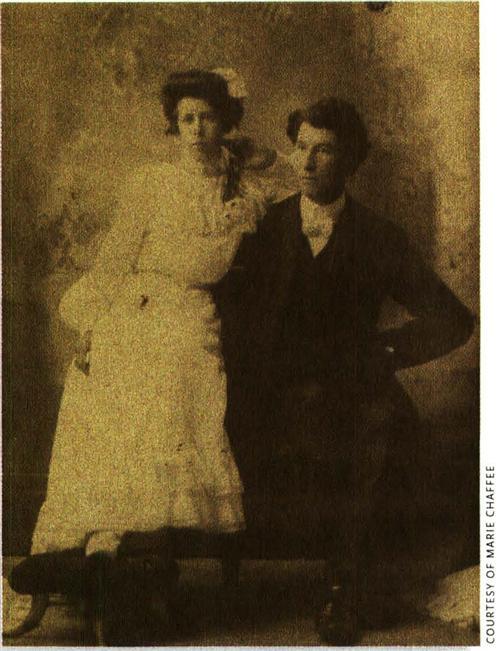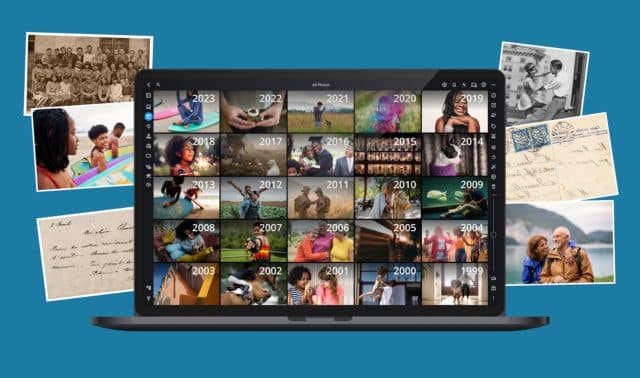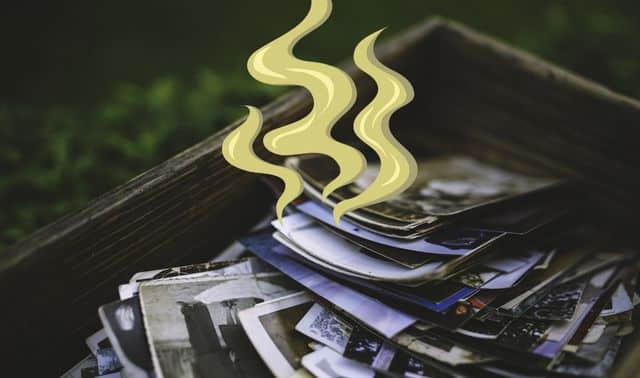When Marie Chaffee asked relatives to send photos of her grandfather Elmer Perdew, she thought she’d made a simple request. But her cousins all sent copies of a picture Chaffee already owned — an unidentified one at that. Each cousin’s copy of the undated portrait had a different caption, identifying the man as Elmer, Charles or Moses Perdew. And no one could name the woman. Chaffee had stumbled upon a family photo mystery.
Now Chaffee wants to find out why this portrait appeared in four photo collections and, most important, whom it depicts. To answer these questions, she must attempt to date the picture, then sift through genealogical data and consult her cousins.
Determining a date
Chaffee first needs to establish a time frame for the image. Since the portrait doesn’t have a photographer’s imprint (or name and place of business), she must rely on clothing clues. The woman’s hair bow and the style of her dress, with its high neckline and ruffled bodice and hem, suggest 1900 to 1910. The gentleman’s jacket, vest and tie date to the same decade.
Because of the woman’s white dress, Chaffee assumed that the image depicts a couple on their wedding day. But at the turn of the 20th century, young women also wore white for religious occasions, graduations and to keep cool in the summer.
Naming the Perdews
Chaffee has three possible identifications for this image — but are any of them accurate? Moses Perdew (1831 to 1902) had 11 children, including Charles (1874 to 1963). Elmer (1888 to 1964) was Moses’ great-grandson.
By 1900, Moses would have been too old to sit for this portrait. Charles, on the other hand, would have been in his mid-20s to early 30s. Yet after comparing this portrait with another identified photo of Charles, I concluded that they can’t be the same person. Their hair and the shapes of their faces show a family resemblance, but their noses don’t match up, nor do the distances between their eyes and eyebrows.
Next, I compared this picture to another photo of Elmer, and had the same problem. I had confirmed, though, that all of the men in these portraits are related. They have similar facial features and thick, wavy hair.
When I placed the unidentified photo alongside other family images, I realized that the man and woman in this picture could be related. These two also have similar facial features — notice the shapes of their heads, noses, mouths and eyes. They might even be siblings. The pose suggests a close relationship, and it’s not unusual to see a brother and sister seated together.
Taking the next steps
By consulting her genealogical data, Chaffee can create a list of relatives whose life dates match this photo’s time frame. To narrow the possibilities, she should then find pictures of each person and compare them to this portrait, paying particular attention to hair, eyebrow placement and nose and mouth shapes.
Determining how all four cousins ended up with copies of this image also may aid the identification process. Chaffee should find out if her cousins have other images in common. Doing so will help the family trace the ownership of the mystery photo and could help them identify other images. The cousins all descend from Moses Perdew, so it’s possible that the photograph originally belonged to him.
Then Chaffee should locate other cousins who might have copies of the picture. Perhaps one of them can confirm the identification.





